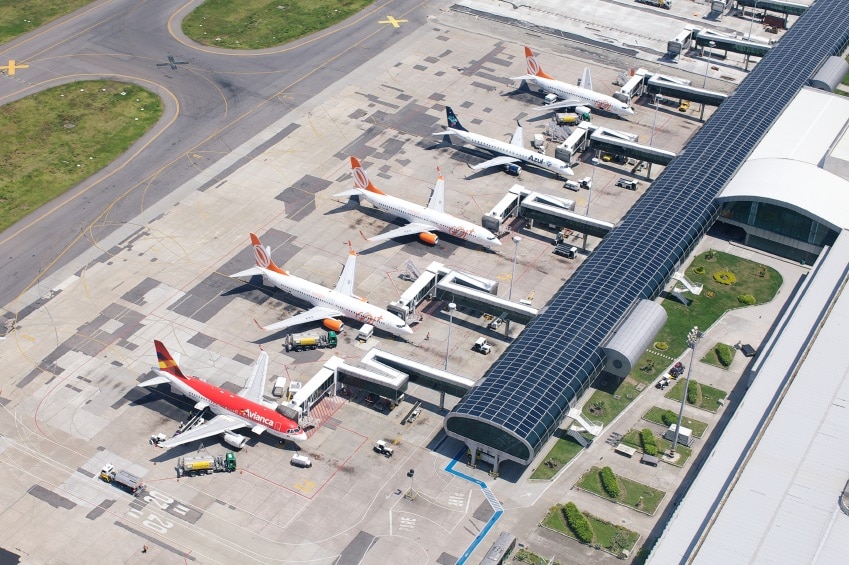NextGen Procedures Improves Efficiency for North Texas Airlines
The Federal Aviation Administration (FAA) announced the latest advancement in aviation infrastructure improvements with the launch of the North Texas NextGen Metroplex project. This air traffic upgrade, enhanced by Global Positioning System (GPS), offers more safe, efficient and echo-friendly flights for airlines, crew members and passengers.
The North Texas NextGen Metroplex project is currently the largest joint-venture implemented by the FAA. Approximately 800 flights travel through the busy hub of the Dallas/Fort Worth International Airport (DFW) daily. The airspace improvements reduce miles flown by about 1 million nautical miles annually. Additionally, it saves up to 4.1 million gallons of fuel and reduces carbon emissions by about 41,000 metric tons each year. These impressive efficiency reductions are due to the collaborative efforts of the FAA, National Air Traffic Controllers Association (NATCA), the Professional Aviation Safety Specialists (PASS), the Airline Pilots Association, International (ALPA) American Airlines, Southwest Airlines and DFW.
“The North Texas NextGen Metroplex is an example for the entire country of the difference we can make with the federal government,” said U.S Transportation Secretary, Anthony Foxx. “This major infrastructure project means more on-time arrivals for passengers, fuel savings for airlines and reduced emissions for the environment.”
NextGen airspace improvements paves the way for initiatives implemented by the FAA in partnership with the aviation community, ensuring the United States remains the measuring stick for other countries in aviation safety, airspace efficiency and cleaner emissions standards. This streamlined process helps reduce complexities for air traffic controllers and flight crew members, which means fewer delayed flights, shorter route flight patterns and reduced emissions for the environment.
“DFW Airport is very supportive of the effort to modernize the nation’s air traffic control, as our Airport has served as an active test site for advanced air traffic safety and capacity enhancement technologies for many years,” said Sean Donohue, Chief Executive Officer of DFW. “NextGen will make air travel more efficient and safer for our customers, and it will allow our current aviation infrastructure to be better utilized.”
The North Texas Metroplex project includes several other strategic improvements to streamline the airspace and reduce complex navigation for the crew members. The FAA developed 80 new procedures implementing the GPS technology. Some of these enhancements include:
- Creating Optimized Profile Descent (OPD) procedures into DFW International Airport and Dallas Love Field (DAL) that allows pilots to idle the engines during descent. This reduces fuel consumption and carbon emissions.
- Developing efficient alternate routes to be used when hazardous weather conditions jeopardize normal arrival and departure flight paths. Coordinating this will reduce number of miles flown during a flight path.
- Establishing departure and arrival routes that align airplanes on preferred paths or shorter distance flight paths to reduce miles flown.
- Establishing a precise arrival route from the northwest to DAL in order to eliminate congestion in the airspace above DFW.
- Creating GPS-based arrival and departure paths for DAL to ensure precise flight paths over neighborhoods near the airport.
- Developing satellite-based departure procedures that are predictable and repeatable flight paths to ensure a more efficient level-off time in order to reach a cruise altitude sooner.
The FAA implemented similar upgrades in the Houston area in May. Additional projects are also underway or planned for other Metroplex regions across the country, including Washington D.C., Northern California, Atlanta and Charlotte. These metropolitan areas have multiple airports with heavy air traffic and environmental constraints that have hindered improved and efficient flow in the airspace.
For more information on the NextGen aviation systems and improvements in airline safety, efficiency and echo-friendly emissions, contact the aviation lawyers of Slack Davis Sanger. For more than 20 years, we have operated at the cutting edge of technology and advancements in the aviation industry. The aviation accident lawyers of Slack Davis Sanger include a former NASA senior aerospace engineer, licensed pilots and airline technicians who are all part of our highly-skilled legal team. Contact us today at 800.455.8686 or www.slackdavis.com.

